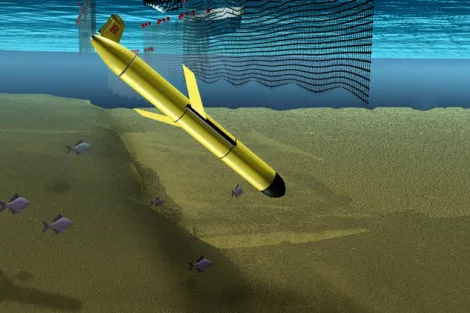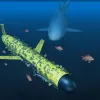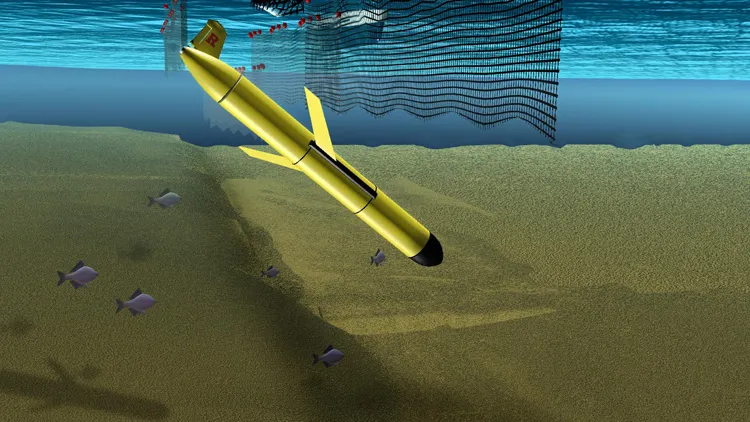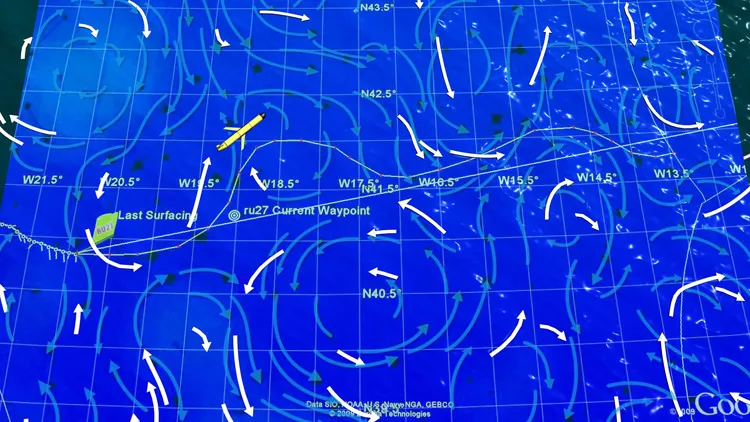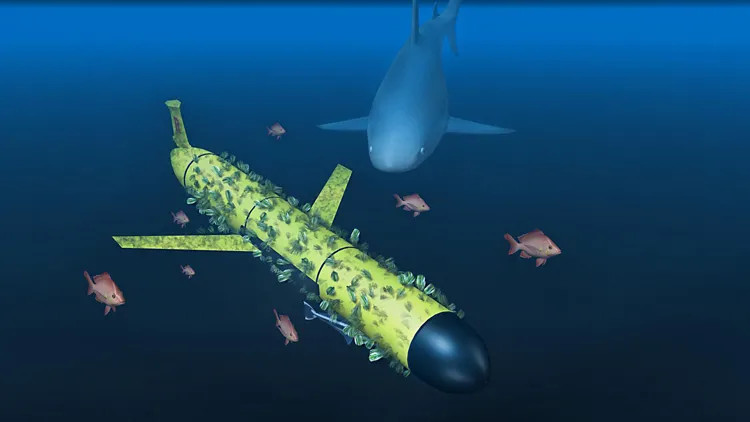This illustration shows how Scarlet Knight, the first unmanned, underwater robot or glider to cross an ocean basin, faced an entire fleet of fishing ships, equipped with nets, threatening the glider’s path across the continental shelf. “Crossing the shelf is like running across the New Jersey Turnpike with your eyes closed,” said filmmaker Dena Siedel in the documentary Atlantic Crossing: A Robot’s Daring Mission. The robotic glider crossed the Atlantic in 2009.
Robotic Ocean Explorer
This is the world’s first unmanned, underwater robot—or “glider”—to cross an ocean basin, the pioneering Scarlet Knight. The robotic glider, also known as RU27, can dive to depths of 200 meters (660 feet) to collect data such as temperature, how salty the water is, and the speed and direction of ocean currents. This helps scientists better understand how the ocean works and how the ocean and the climate are changing, processes that directly impact all life on Earth. Learn more about Scarlet Knight’s historic 2009 Atlantic crossing and how robotic gliders will help Gulf oil spill researchers by detecting oil below the water’s surface in Underwater Robots Explore the Ocean. Scarlet Knight is now displayed at the Smithsonian Museum of Natural History in Washington, D.C.


